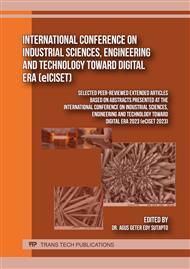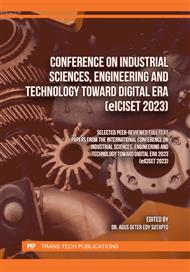p.9
p.15
p.23
p.31
p.43
p.49
p.59
p.65
p.77
Risk Based Inspection Analysis on Primary and Secondary Cooling Pipe of the TRIGA 2000 Reactor
Abstract:
Analysis of the application of Risk Based Inspection method in the primary and secondary cooling pipe of TRIGA 2000 Bandung Reactor was conducted with the aim of obtaining a risk level value. To obtain the risk level value is carried out secondary cooling pipe thickness measurement using Ultrasonic Testing first. Furthermore, to obtain the risk level value, data such as pipe specifications, flowing fluid specifications, management system factors, measured pipe thickness data and previous inspection results, and pipe maintenance history will be used to calculate probability of failure (PoF) and Consequence of Failure (CoF) values. Probability of Failure and Consequence of Failure values are then plotted into a risk matrix to find out the level of risk that the component has. Risk level results can then be used to determine inspection methods and inspection intervals. The result of the risk level obtained from the calculation of the primary cooling pipe triga reactor 2000 is MEDIUM, lower than the risk level in the primary cooling pipe Kartini Reactor is MEDIUM HIGH. For the risk level of secondary cooling pipe Triga Reactor 2000 is MEDIUM is the same as the risk level of secondary cooling pipe Kartini Reactor. The recommended inspection methods for both reactors are the same using ultrasonic thickness measurement and visual examination inspection methods. Next inspection intervals for primary cooling pipes were 2068, 2092, 2104, 2110 and 2113 and for Kartini Reactor primary cooling pipes every 20 months. For Secondary cooling pipe Triga Reactor 2000 next inspection interval is 2067, 2090, 2101, 2106 and 2108 and for Kartini Reactor secondary cooling pipe every 10.11 years.
Info:
Periodical:
Pages:
59-64
Citation:
Online since:
March 2024
Price:
Сopyright:
© 2024 Trans Tech Publications Ltd. All Rights Reserved
Share:
Citation:



